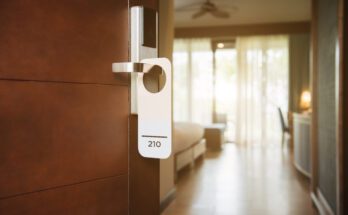Yankees Hand Bieber a Shellacking While Cole Rolls
Bieber, for as otherworldly as he was this year — he not only won the AL pitching triple crown by leading the league in wins, strikeouts, and ERA, but also led in FIP, WAR, K%, and K-BB% — did allow seven home runs, as if to hint that he was merely human. Two of those were on fastballs, one in the center of the strike zone, hit by the Reds’ Eugenio Suarez on August 4. In fact, that was the only hit out of the 28 fastballs Bieber threw down Broadway, just 11 of which were put into play. Judge didn’t have to know how rare it was for Bieber to leave one there to do business with it:
The home run — 108 mph off the bat, with an estimated distance of 399 feet — was Judge’s first since August 11, the same day on which he strained his right calf muscle. To that point, he led the majors in homers, but he landed on the Injured List a few days later, and re-injured the calf in his first game back on August 26. Since the initial injury, he hit just .205/.326/.231 in 46 plate appearances spread out over 47 days. While his exit velocity remained respectable, he didn’t elevate the ball with the same consistency, or come close to doing the same kind of damage:
| Split | GB/FB | GB% | FB% | EV | LA | xwOBA |
|---|---|---|---|---|---|---|
| Through 8/11 | 0.76 | 36.4% | 47.7% | 92.6 | 19.3 | .418 |
| Since 8/26 | 1.57 | 44.0% | 28.0% | 91.3 | 9.5 | .277 |
Of Judge’s nine hard-hit balls after the injury, four had negative launch angles, including the three on which he produced exit velocities of at least 105 mph. Only four had launch angles of greater than 10 degrees, and only two traveled more than 300 feet, the longest of which was a lineout on the final day of the season against the Marlins. Long story short, he simply hadn’t hit a ball like that in awhile.
The Yankees didn’t go down in order once against Bieber, and added runs in the third, fourth, and fifth innings. Bieber was one strike away from a clean third inning, but on a full count, Aaron Hicks held off against a low four-seam fastball and drew a walk; Luke Voit then doubled him home for a 3-0 lead. In the fourth, Gleyber Torres worked a one-out walk and came home on a ringing double off the left-center field wall by Brett Gardner, who took third on a Kyle Higashioka single and scored on a LeMahieu infield single that followed an impressive diving stop by Francisco Lindor; that stretched the lead to 5-1. Following a two-out single by Gio Urshela in the fifth, Torres ended Bieber’s night early when he sent a fastball over the center field wall for a two-run homer and a 7-2 lead.
During the regular season, Bieber carved up opposing hitters thanks largely to his breaking stuff. As noted in my series preview, he held batters to an .095 batting average and .154 xwOBA against his curveball, and a .135 batting average and .277 xwOBA against his slider, with swinging strike rates of 25.8% on the former and 28.5% on the latter. The Yankees didn’t do much damage against either pitch, but neither was the weapon for Bieber that it was during the regular season. He got “only” seven swings and misses from among his 38 curves (18.4% swinging strike rate), and another three called strikes against 17 called balls. Of the six Bieber curveballs that the Yankees put into play, two were singles, the one by Urshela and an infield hit by Torres in the second inning. Meanwhile, Bieber induced the Yankees to swing at just two of the seven sliders he threw, producing a Voit groundout and Giancarlo Stanton pop-up in the first inning; he got just one called strike from among the other five pitches.
By laying off the breaking stuff that was low and out of the zone, the Yankees made Bieber labor, ran up his pitch count — his totals by inning ran 19-16-25-27-18 — and did their damage against his four-seam fastball, which at an average velocity of 93.5 mph was 0.6 below his season average. Five of the team’s nine hits against Bieber were on fastballs, including both homers and Gardner’s double. The two first-inning hits and Gardner’s double all came on first-pitch fastballs.
About Gardner: the 37-year-old lefty hit just .223/.354/.392 on the season, numbers boosted by a late hot streak. After batting just .183/.317/.356 through September 13 while Clint Frazier carved out a spot in the lineup — first filling in for the injured Judge in right field, then taking away time from Gardner in left — Gardner got off the interstate (to use Ken Singleton‘s term for a player hitting below .200) and hit .385/.500/.538 over his final 32 PA. While Bieber was more effective against lefties than righties this year (.194 wOBA versus .247 wOBA), and while Frazier was more effective against righties than Gardner (.388 wOBA versus .332), manager Aaron Boone went with the grizzled vet, who also happened to be the hotter hand, as Frazier closed the season in a 1-for-20 funk. For one night, it worked like a charm, as Gardner added a two-run homer off Adam Cimber in the seventh.
As for Cole, the 30-year-old righty dominated, striking out 13 in seven innings while allowing six hits and walking none. Three of the six hits were by Indians left fielder Josh Naylor, who doubled off him with two outs in the second — the Indians’ first hit, by which point Cole had already notched four strikeouts — then hit a towering, 424-foot solo homer off him in the fourth, and singled off him in the seventh. Cole went to 2-0 and 3-1 counts only once apiece and got both hitters out. By comparison, Bieber had five 2-0 counts and three 3-1 counts; four of the seven batters (Voit faced both counts) reached safely.
The only time Cole was ever in trouble was in the third inning, by which point he was pitching with a 3-0 lead. Delino DeShields stroked a one-out single up the middle, then took second on a pitch in the dirt that Higashioka picked up and airmailed into center field. Lindor popped up for the second out, but when Cesar Hernandez grounded to Torres in the hole, he threw to third base to try to get DeShields but was unsuccessful. With runners at the corners, the dangerous Jose Ramirez hit a 106.9 mph sizzler down the right field line, bringing home DeShields, but Hernandez held up at third.
Up next was Carlos Santana, who after hitting for a career-high 135 wRC+ last year slumped to a career-low 95 (via a .199/.349/350 line) this year. Cole threw a 96.9 mph fastball in the middle third of the strike zone that Santana watched go by. Cole threw a curve, a bit closer to the middle of the zone, and again, Santana watched it go by. Finally, Cole threw a 98.8 mph heater — his fastest pitch of the night to that point — a bit higher, a bit more inside but still a strike, and Santana swung and missed for strike three, ending the threat.
[embedded content]After that point, the Indians went 2-for-14 with seven strikeouts against Cole, with both hits coming off the bat of Naylor, who added another double off reliever Luis Cessa during garbage time.
For the night, Cole generated 23 swings and misses, including 12 on his fastball and another five apiece on his curve and slider. Of his 13 strikeouts, six came against the fastball (three swinging, three foul tips), four against the curve (two swinging, one looking, one foul tip), two against the slider and one against a changeup (all swinging). He struck out every Indians starter except for Naylor and Ramirez, five of them multiple times, with Tyler Naquin taking the silver sombrero.
| Rk | Player | Date | Series | Gm# | Opp | IP | SO |
|---|---|---|---|---|---|---|---|
| 1 | Roger Clemens | 10/14/00 | ALCS | 4 | Mariners | 9.0 | 15 |
| 2 | Gerrit Cole | 9/29/19 | ALWCS | 1 | Indians | 7.0 | 13 |
| 3 | Orlando Hernandez | 10/24/00 | WS | 3 | Mets | 7.1 | 12 |
| 4T | Bob Turley | 10/9/56 | WS | 6 | Dodgers | 9.2 | 11 |
| David Wells | 10/11/98 | ALCS | 5 | Indians | 7.1 | 11 | |
| Hiroki Kuroda | 10/14/12 | ALCS | 2 | Tigers | 7.2 | 11 | |
| 7T | Red Ruffing | 9/28/32 | WS | 1 | Cubs | 9.0 | 10 |
| Allie Reynolds | 10/4/52 | WS | 4 | Dodgers | 9.0 | 10 | |
| Bob Turley | 10/6/58 | WS | 5 | Braves | 9.0 | 10 | |
| Dave Righetti | 10/8/81 | ALDS | 2 | Brewers | 6.0 | 10 | |
| Orlando Hernandez | 10/23/99 | WS | 1 | Braves | 7.0 | 10 | |
| Mike Mussina | 11/1/01 | WS | 5 | Diamondbacks | 8.0 | 10 | |
| Roger Clemens | 11/4/01 | WS | 7 | Diamondbacks | 6.1 | 10 | |
| Andy Pettitte | 10/2/03 | ALDS | 2 | Twins | 7.0 | 10 | |
| Mike Mussina | 10/13/03 | ALCS | 4 | Red Sox | 6.2 | 10 |
As dominant as the performance was, Cole didn’t even set a career postseason high for strikeouts; while pitching for the Astros, he racked up 15 against the Rays in Game 2 of last year’s Division Series. He also struck out 12 in Game 2 of the 2018 Division Series against Cleveland, though just two years later, only Lindor and Ramirez remain from that lineup.
The choice to go with Higashioka was Boone’s other gamble of the night, though it wasn’t exactly a tough call. Gary Sanchez suffered through a miserable season at the plate (.147/.253/.365), and while his much-maligned defense was a bit improved, Higashioka was better; by Baseball Prospectus’ metrics, he was 1.6 runs above average in 107 innings, while Sanchez was 0.9 below average in 321.2 innings. Cole and Higashioka played on a traveling team together in Southern California (Hicks was a teammate), and the pairing of the two for the final four starts of the season coincided with the ace’s strong performance down the stretch. In five starts together, Cole has struck out 47 while walking only five; over the last four of those starts, he’s allowed only four runs. We can expect the pairing to continue.
In all, the Yankees made an impressive opening statement against a pitcher who’s been considered the majors’ best this year (a title often bestowed on Cole last year), and they did so on the road after going 11-18 away from Yankee Stadium during the season. The big bats of Judge and Stanton (who hit a ninth-inning homer) showed some life, Torres went 4-for-4 and Gardner 3-for-5, and the team looked like a juggernaut instead of one that could have slipped into the eighth seed this past weekend. Look out, American League.


